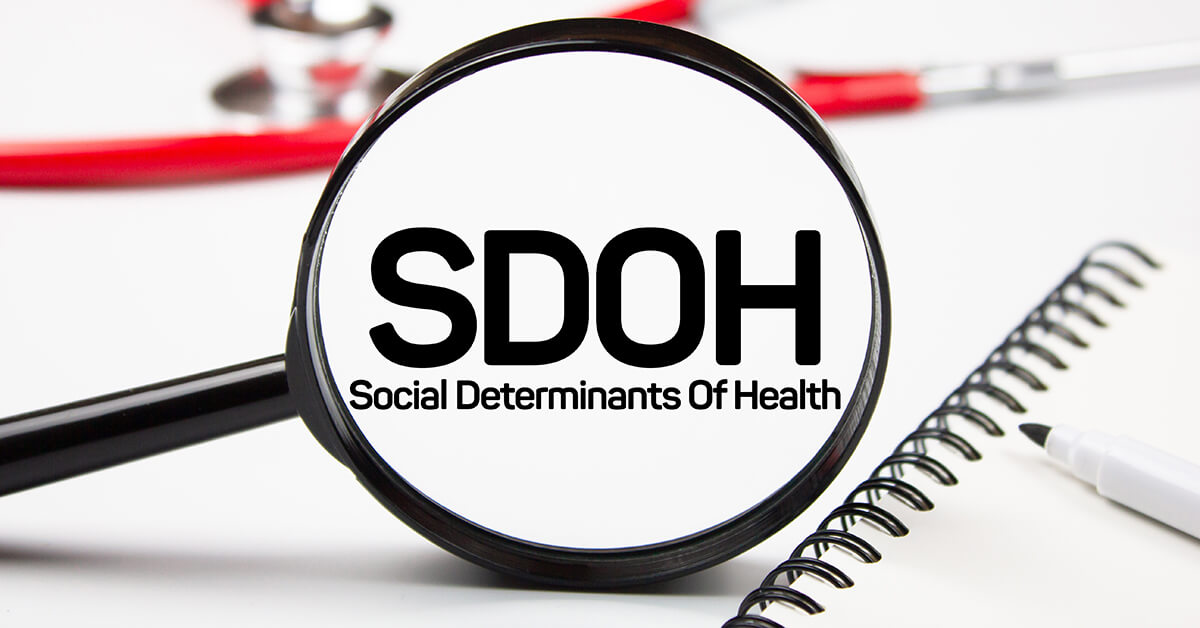June 25, 2024

Burda On Healthcare: Open Your Eyes to a Social Determinants of Health Blind Spot
I admittedly don’t write much about social determinants of health (SDoH), or as we like to call them at 4sight Health, “health multipliers.” I have a blind spot to them regardless of the label.
As a practicing amateur psychologist, I’m blind to SDoH because I don’t suffer from any of them. I live in a nice house in a safe neighborhood. I have two cars that don’t make me sweat on the expressway, which is crucial in and around Chicago. I make a decent living. If you met me in person, you know I don’t have food insecurity. These are not excuses. It’s my self-diagnosis.
I’m not the only one with a blind spot for SDoH, especially for patients’ financial insecurity. Three recent reports suggest that many providers are not hearing what their patients are saying as providers screen them for SDoH.
Patients Cite ‘Financial Strain’ as Top SDoH
 The first report is a short, three-page research letter published in June in JAMA Internal Medicine. Three researchers from Boston and Brown universities wanted to know what federally qualified health centers, or FQHCs, found when they screened patients for SDoH. The study pool was 1,338 FQHCs that treated 30 million patients in 2022. Of those FQHCs, 887, or only about two-thirds, screened patients for SDoH.
The first report is a short, three-page research letter published in June in JAMA Internal Medicine. Three researchers from Boston and Brown universities wanted to know what federally qualified health centers, or FQHCs, found when they screened patients for SDoH. The study pool was 1,338 FQHCs that treated 30 million patients in 2022. Of those FQHCs, 887, or only about two-thirds, screened patients for SDoH.
What the other third was up to, I don’t know. Here’s the interesting part. Here are the average positive screening rates for four separate SDoHs. That’s the percentage of screened patients who said yes, they do suffer from that particular SDoH.
- 14.1% said lack of transportation
- 15.4% said housing insecurity
- 16.3% said food insecurity
- 27.6% said financial strain
In short, financial insecurity was by far the No. 1 SDoH cited by patients screened by their FQHC.
“[The findings] indicate that FQHCs are vital safety-net healthcare organizations, with a meaningful proportion of patients reporting social risk factors, especially financial strain,” the researcher said.
Providers Ask Patients About ‘Financial Insecurity’ Least
 The fact that financial strain, or financial insecurity, topped the FQHC list is what makes the findings of the second report just as if not even more interesting. The Commonwealth Fund published the report, “How U.S. Health Care Providers Are Addressing the Drivers of Health.” The 16-page report is based on a survey of about 3,600 U.S. adults and a little more than 1,000 primary care physicians (PCPs) in the U.S.
The fact that financial strain, or financial insecurity, topped the FQHC list is what makes the findings of the second report just as if not even more interesting. The Commonwealth Fund published the report, “How U.S. Health Care Providers Are Addressing the Drivers of Health.” The 16-page report is based on a survey of about 3,600 U.S. adults and a little more than 1,000 primary care physicians (PCPs) in the U.S.
Asked what economic or social need they worry about most, having a “stable job or source of income” topped the list, cited by 43% of the adults. That was followed by having “enough money to pay rent or mortgage” (40%), having “enough food” (26%) and having a “clean and safe place to sleep” (17%). They worried more about financial insecurity than housing insecurity. That says something.
The something it says is PCPs are missing the boat when they screen their patients for SDoH.
Sixty-three percent of the surveyed PCPs said they screen their patients for at least one “social need.” In rank order, here’s what they screen them for:
- 42% for social isolation
- 41% for domestic violence
- 38% for transportation needs
- 37% for food insecurity
- 37% for housing problems
- 35% for financial insecurity
Financial insecurity came in dead last on the PCPs’ ranking despite the fact that it’s first on the list of social needs cited by patients in addition to the No. 1 SDoH cited by FQHC patients in the JAMA study.
“There is a mismatch between what needs are screened for and what needs patients worry about,” the Commonwealth Fund report said. “Physicians reported screening for financial security at slightly lower rates than other needs, yet patients reported worrying about financial needs more so than those related to food or housing. While it’s important that providers screen for a range of needs, they may sometimes need to be more targeted in their approach.”
Public Has a Soft Spot for Medical Debt
 Adding icing to this failure to communicate cake is the third report. The University of Chicago Harris School of Public Policy, the Associated Press and NORC (National Opinion Research Center) at the University of Chicago published the 15-page report, which is based on a survey of about 1,300 U.S. adults.
Adding icing to this failure to communicate cake is the third report. The University of Chicago Harris School of Public Policy, the Associated Press and NORC (National Opinion Research Center) at the University of Chicago published the 15-page report, which is based on a survey of about 1,300 U.S. adults.
Most of the survey questions asked people about how they felt about student loan forgiveness. But they did ask a few questions about how they felt about forgiving medical debt. As I’m sure you know, forgiving unpaid medical bills is one of the hottest topics in healthcare right now.
To wit, the U.S. Consumer Financial Protection Bureau (CFPB) in June issued proposed regulations that would ban unpaid medical bills from appearing on consumer credit reports.
“The CFPB is seeking to end the senseless practice of weaponizing the credit reporting system to coerce patients into paying medical bills that they do not owe,” the CFPB said in a statement. “Medical bills on credit reports too often are inaccurate and have little to no predictive value when it comes to repaying other loans.”
I wrote about how slipshod the healthcare revenue cycle is in this blog post, “The Complexity of Medical Bills Rolls Downhill for Consumers.”
Anyway, back to the UChicago Harris/AP-NORC poll results. Here’s what the respondents said:
- 51% said it was “extremely” or “very” important that the federal government provide debt relief to people with unpaid medical bills.
- 56% said they “strongly” or “somewhat” favor medical debt forgiveness if the person “is experiencing financial hardship that is expected to prevent them from repaying their debt.”
- That percentage rises to 59% if the person “has made on-time payments for an existing loan for 20 years.”
- That percentage jumps to 66% if the person “was defrauded or experienced fraud.”
The public is a pretty forgiving lot when it comes to unpaid medical bills racked up by patients through no fault of their own. (Especially when it’s your tax dollars funneled through the federal government.)
Don’t Bury the Lede
When you add it all up, the first SDoH screening question that healthcare providers should ask patients is, “Do you feel financially secure or financially insecure?” Or something like, “Is your financial situation affecting whether you see your doctor or fill a prescription?” It’s not that all the other SDoH screening questions are unimportant. It just seems that one question is more important than the others when it comes to a patient’s health. Money. Ironically, it’s the one question that providers ask the least.
What do they say at the poker table? Money talks, bullshit walks? I guess it’s the same in healthcare.
Thanks for reading.





